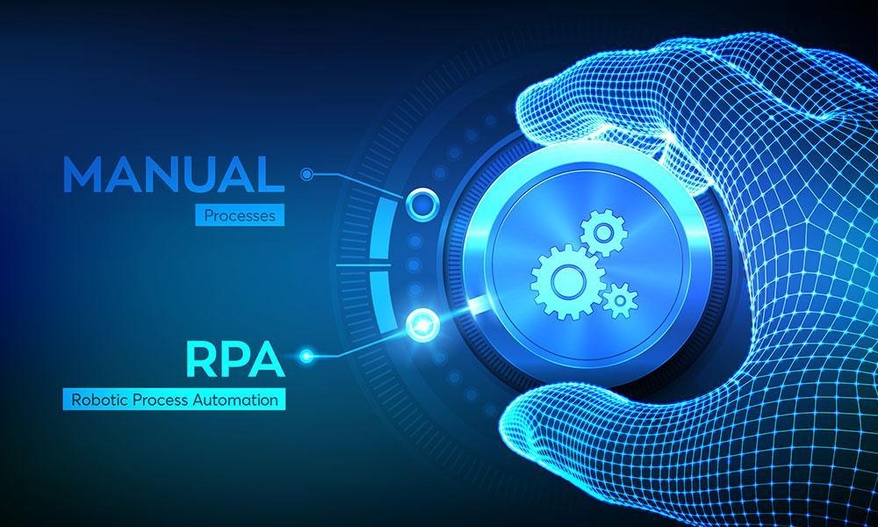Can you succeed without using the latest technologies in your industry? The simple answer is “no”. As the first fifth of the 21st century is coming to an end, Robotic Process Automation (RPA) is becoming the latest word in workflow optimization.
Do you want to stay ahead of the competition? The key is using the best tools to do it. If you are still relying on humans to do repetitive tasks in your company, you are falling behind.
The future is here, and it has brought AI with it. Robots can drive your business growth in numerous ways as long as you are ready to embrace them.
If you are still weighing the pros and cons of robotic process automation, this article is for you. The quick read can help you make a beneficial decision for your company.
1. Cut Costs by Implementing New Tools
The key benefit of RPA is cost-cutting. Can you grow a business without substantial investment in its future? Unlikely. RPA can help you do it without looking for outside financial resources. It can help you cut costs.
According to PwC, 45% of work efforts could be automated with RPA, thus reducing expenses by over $2 trillion.
By automating your work process with the assistance of the RPA tools, you can cut administrative costs immediately. The best part about using RPA is that you don’t need any additional back-office resources to achieve excellent results.
Some business owners hold back from implementing RPA because it requires additional investments. However, the ROI of these tools is tremendous. The overall efficiency and productivity of the company go up, thus allowing it to grow and develop.
2. Excellent Analytic Tools To Boost Development Efforts

Data is the most important tool you have in your hands. But only if you know how to use it. Analytics is the key to the success of any business. Analyzing the way your company works, satisfies clients, meets deadlines and spends money is vital to determining the possibility of its growth.
The ability to manage data and analyze it properly is priceless. Implementing technology that can help collect and analyze data can help any company stay ahead of the competition while optimizing work processes.
According to software developers at Tricension, Robotic Process Automation helps assess operational processes based on the collected performance data of your company. RPA assists with collecting and processing large amounts of information 24/7. This is something humans can’t do at any reasonable price or within a reasonable timeframe.
3. Efficient Performance and Reliability
By automating the majority of repetitive and routine actions, you allow your employees to turn their attention to other tasks, which require human assistance. By eliminating repetitive actions, you can cut down on the number of employees altogether.
Meanwhile, the overall satisfaction of workers is likely to be on the rise. After all, how many of them are happy to do repetitive data entry instead of the work they enjoy?
In the 21st century, robots can do the majority of mundane tasks. You are probably using a dishwasher at home. Then why is your employee still typing in the same client information into 10 different forms every day?
RPA allows your employees to reroute their skills and experience toward serious tasks, which are required for business growth and development. Simple and repetitive tasks should be left to the robots.
4. Keeping Employees Healthy

One of the benefits of RPA, which is often overlooked, is the ability to keep workers safer and prevent health problems. Many workers suffer from musculoskeletal disorders due to performing repetitive tasks quickly. Swollen fingers, cramped muscles, and joint pain are among the most common injuries in the manufacturing industry.
When people perform the same tasks at high speeds over a long period of time, they develop chronic conditions that force them to leave their jobs.
Robots are much better suited to perform repetitive tasks at high speeds. RPA can save lives and improve your workers’ health tremendously.
5. Simple Integration with a Low Learning Curve
When you start integrating new software into your system, it can mean anything from numerous errors to downtime. The best part about RPA is that it doesn’t change your system. It works together with it. Your employees don’t need to suffer through a high learning curve. They can turn the RPA tool on and off whenever they wish.
For example, the integration of custom software solutions may take days for some companies. For financial institutions, it could take weeks. Implementing RPA is fast and simple. It doesn’t interfere with the work process.
6. Improved Accountability and Tracking

Humans make mistakes. Robots do too. But much less often. One of the important benefits of RPA that can help your business grow is improved accountability and tracking.
RPA helps you track all tasks completed by the tool. You can have access to a detailed log of all actions taken by the program. Can you do the same with your human employees? Such accountability helps you with auditing your business processes, finding ways to improve the way your company works and increasing its efficiency.
Simple accountability and tracking allow you to see the roadblocks in the operation process and help deal with them quickly.
7. Scalability For Business Growth Opportunities
RPA allows you to scale your business to meet the growing demands of the industry as well as your plans for the future. Once you train the program, it can be cloned to share work. Robots can work together across different departments, simplifying the operation of your company and allowing improved collaboration between branches.
RPA is priceless for processes that need cross-department feedback and analysis, such as marketing or compliance. As your company grows so does the workload and so does the number of bots, if necessary.
Final Thoughts
RPA is quickly becoming an integral part of the work process optimization for many companies. By overlooking the obvious benefits of such automation, you could be falling behind the competition. RPA can help your business grow while cutting costs and raising the overall efficiency and productivity with minimal investments.





